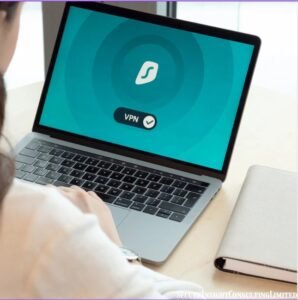Fortify Your Future: 10 Must-Know Cyber Tips for 2025
7 Minutes Read
Introduction
Cybercriminals are more sophisticated than ever, and as we move into 2025, the landscape of cyber threats continues to expand. From identity theft to phishing scams and everything in between, attackers are constantly refining their tactics. It’s no surprise that individuals and organizations alike feel the growing need to protect their digital footprints more vigilantly than ever before.
In 2025, cybercrime isn’t just evolving—it’s mutating. Hackers now wield AI to clone voices, bypass facial recognition, and craft phishing lures indistinguishable from reality.
Whether you’re a seasoned tech enthusiast or simply trying to guard your personal information online, understanding best-practice guidelines can make all the difference. The stakes? Higher than ever. Last year, 43% of small businesses collapsed within six months of a breach, while identity theft cost victims over $10 billion globally. But here’s the good news: 90% of cyberattacks are preventable with proactive measures. In this article, we’ll explore ten essential cyber tips that will help you stay safe in this new digital era, drawing on the latest recommended practices and expert insights.
- Keep Your Personal Information Private
Personal data—like date of birth, mother’s maiden name, passport number—can be a gold mine for cybercriminals. Identity theft not only jeopardizes your finances and credit but can also have a lasting impact on your mental well-being.
- Avoid oversharing: Be cautious about what you post on social media. Even harmless details like your pet’s name or high school could be used to guess your password recovery questions.
- Stay vigilant about data requests: Legitimate organizations rarely ask for sensitive personal information without proper context. If someone requests details that feel intrusive, confirm their identity through an official channel before you respond.
- Demand Data Deletion: Use GDPR/CCPA rights to purge old accounts via tools like Rightly.
- Beware of “Bad Actors” (Phishing, Smishing & Social Engineering)
Cybercriminals employ cunning methods—from phishing emails to text-based “smishing”—designed to trick you into revealing passwords and personal information. They prey on fear, curiosity, or a sense of urgency.
- Check senders and embedded links: Always inspect the “from” email address or the URL of any embedded link. Hover your cursor over a link before clicking to see its true destination.
- Never share personal info via email or phone: Reputable companies do not typically request sensitive data through unsolicited messages. If you suspect a scam, go to the official website directly.
- Slow down: Social engineering thrives on rushed decisions. Read carefully and think twice before acting on urgent-sounding prompts.
- Update Software Regularly

Outdated software is a playground for cybercriminals. Attackers scan for unpatched vulnerabilities in operating systems, browsers, and everyday applications. In 2024, zero-day exploits surged by 62%, targeting outdated apps and IoT devices.
- Automate your updates: Enable automatic updates on all devices—OS, Apps, PCs, smartphones, tablets, and IoT devices.
- Review patch notes: Official releases often mention what security gaps are being fixed. Staying informed about these vulnerabilities will help you prioritize critical updates.
- Use tools like Microsoft Autopatch or NinjaOne for enterprise-scale management.
- Replace End-of-Life devices
- Create Strong Passwords Using Passphrases
With more than 280,000 passwords stolen every day, a single compromised password can be the gateway to all of your personal accounts.
- Longer is stronger: Aim for at least 14 characters. Use phrases that are easy for you to remember but hard for others to guess, blending letters, numbers, and symbols.
- Unique for every account: Reusing passwords across multiple services is one of the easiest ways to get hacked (we call it “Single Point of Failure”).
- Use a password manager: Tools like LastPass, 1Password, Bitwarden, or Dashlane can store and generate complex passwords without you having to memorize them all.
- Use Passkeys: Biometric/FIDO2-based logins (adopted by Google, Apple, Microsoft).
- Embrace Two-Step Verification (MFA)
Two-factor or multi-factor authentication (MFA) provides an extra layer of security. By requiring additional verification—like a code sent to your phone or a fingerprint scan—attackers can’t break in with just your password.
- Enable whenever possible: Email providers, social media platforms, and financial institutions often support MFA for free.
- Use authenticator apps: Services like Google Authenticator or Microsoft Authenticator are safer than relying solely on SMS verification, which can sometimes be intercepted.
- Hardware tokens (YubiKey).
- Location-based MFA (block logins from unfamiliar regions).
- Use Caution with Free Wi-Fi
Public Wi-Fi hotspots, whether at your favorite coffee shop or the airport, can leave you vulnerable to “man-in-the-middle” attacks that capture the data you send over the network.

- Avoid personal transactions: Banking, school portals, and social media logins should wait until you’re on a secure network.
- Consider a VPN: A virtual private network encrypts your data, making it much harder for snoops to steal it, even on public Wi-Fi. (e.g., NordLayer, ExpressVPN)
- Enable “HTTPS-only” mode in browsers.
- Leave No Cyber Footprint on Shared Devices
Using public or shared computers—like those in libraries or hotels—can expose your personal data if you’re not careful.
- Log out completely: Sign out of all accounts before walking away.
- Disable “save password” features: Never allow a shared device to store your login credentials.
- Clear the browser history: Remove cookies and cache to reduce the risk of data theft by the next user.
- Use “private browsing” modes in possible.
- Manage Your Privacy Settings
From social networks to mobile apps, privacy settings often default to more open permissions than you’d expect.
- Regularly audit app permissions: Only share location, camera, or microphone access when strictly necessary.
- Customize your settings: Take advantage of user-friendly privacy panels on operating systems and apps to ensure you’re not oversharing.
- Disable ad trackers (use DuckDuckGo or Brave Browser).
- Opt out of data brokers via Optery or DeleteMe.
- Audit Apps Periodically
Apps are constantly being updated—new features, new permissions, or new privacy policies. Some might overreach by requesting data that isn’t essential to their functionality. Malicious apps mimic legit tools to harvest keystrokes, photos, and location data.
- Review your downloads: Delete any apps you no longer use. Unused apps can still run in the background, posing hidden risks.
- Check app privileges: Ask yourself whether the functionality justifies access to your camera, contacts, or microphone.
- Download only from official stores (Google Play, App Store).
- Check reviews and developer credentials.
- Revoke permissions for unused apps.
- Secure Tomorrow, Together – Cyber hygiene isn’t a one-time vaccine—it’s a lifestyle.
Cybersecurity is a shared responsibility, and staying informed is half the battle.
- Stay in the loop: Follow credible cybersecurity news outlets, subscribe to email alerts from trusted vendors, and keep an eye on emerging threats.
- Educate your circle: Share safety tips with family, friends, and colleagues. When everyone upholds best practices, it raises the security bar for entire communities.
Conclusion & Call to Action
Defending your digital life in 2025 and beyond requires a combination of knowledge, vigilance, and the right tools. By following these ten tips—ranging from creating strong passphrases to enabling MFA and regularly auditing your devices—you’ll significantly reduce your risk of becoming a cyber victim.
But even the best plans can be overwhelmed by fast-evolving threats. That’s where professional guidance comes in. SecureInsight Consulting Limited can help you stay ahead of cybercriminals with comprehensive IT audits and cybersecurity solutions tailored to your unique environment. Contact SecureInsight Consulting to fortify your defenses today—and secure your tomorrow.
Subscribe to this newsletter to Stay informed and stay vigilant!
Remember, in the battle for business security, the best offense is a good defense.

